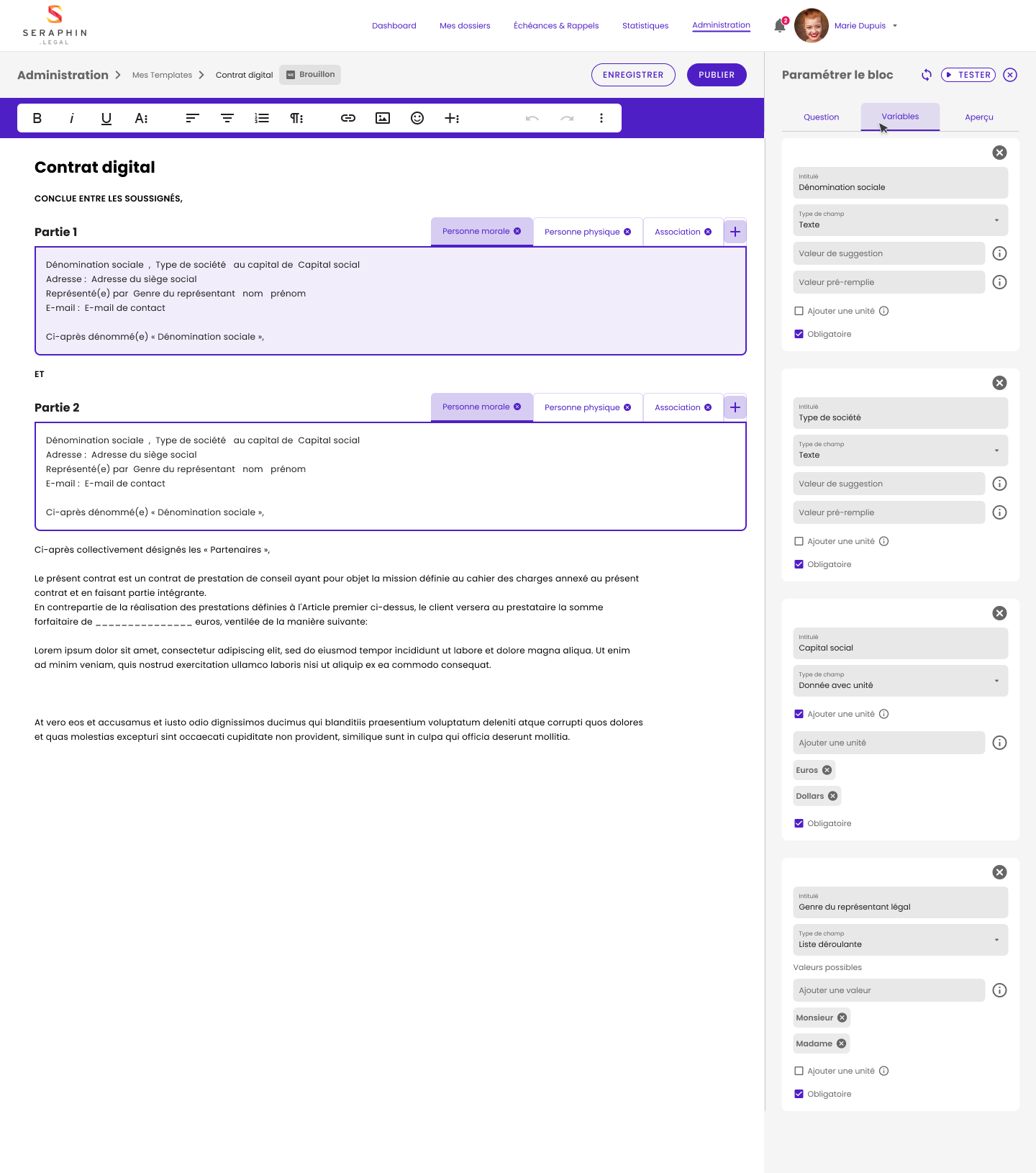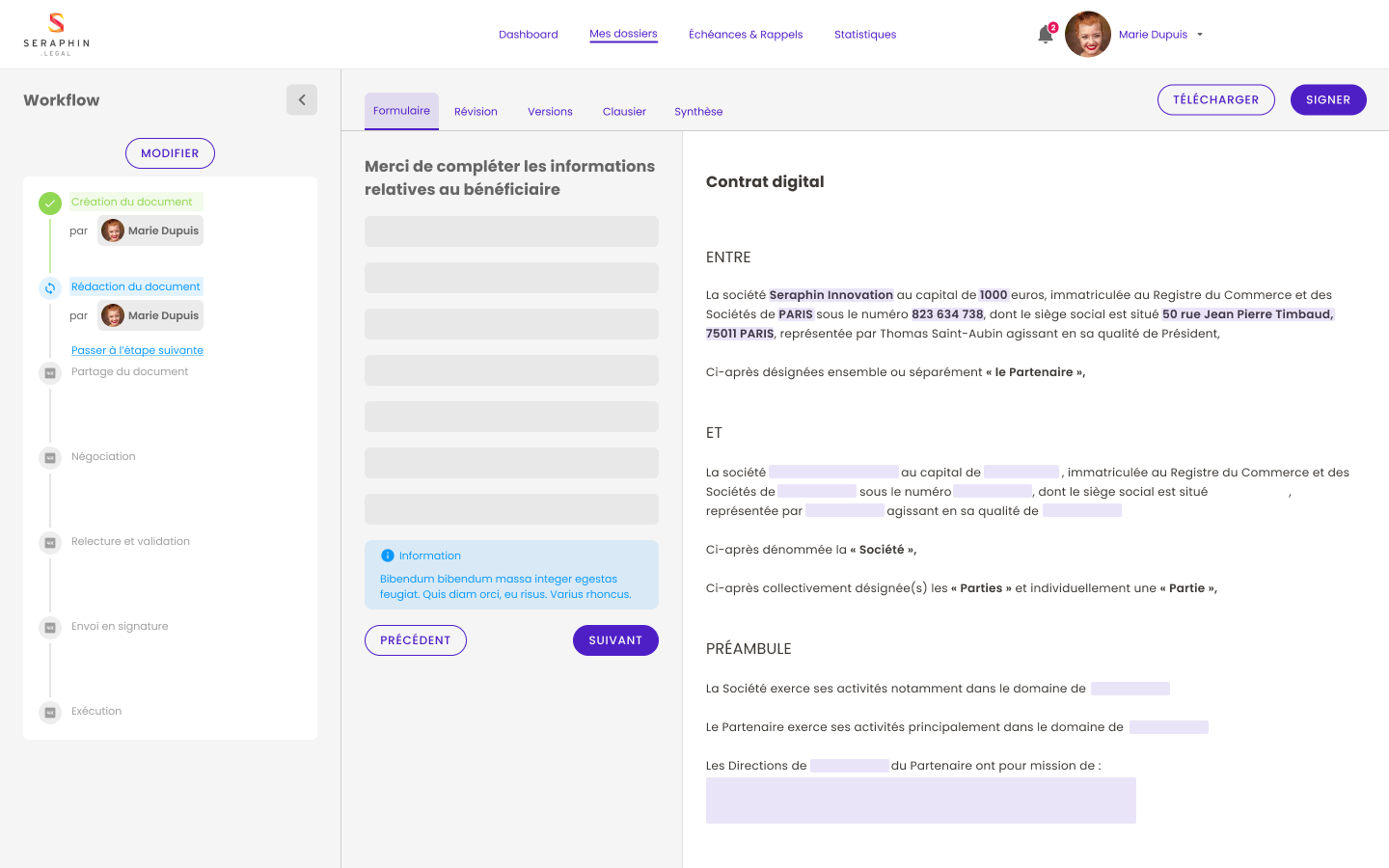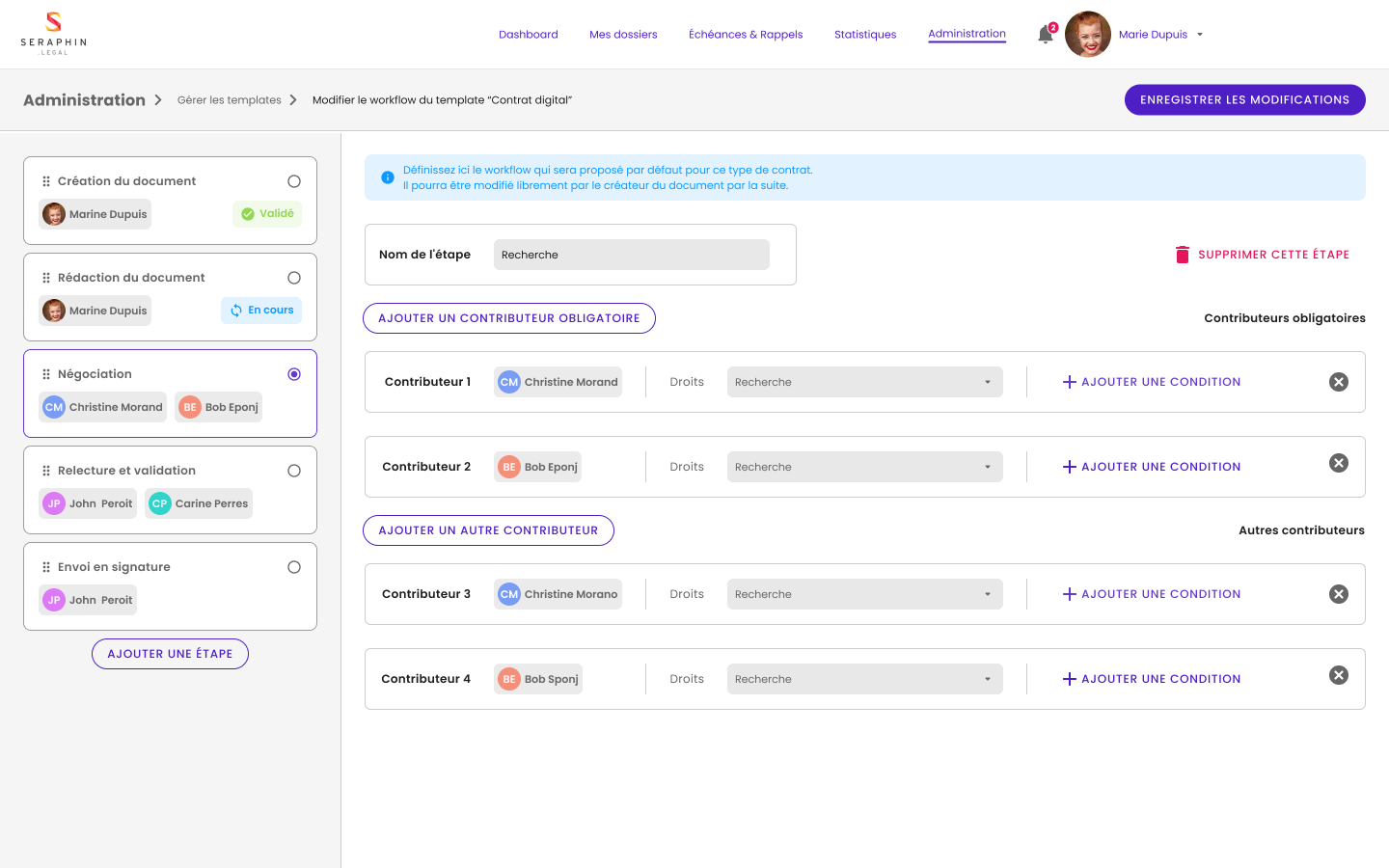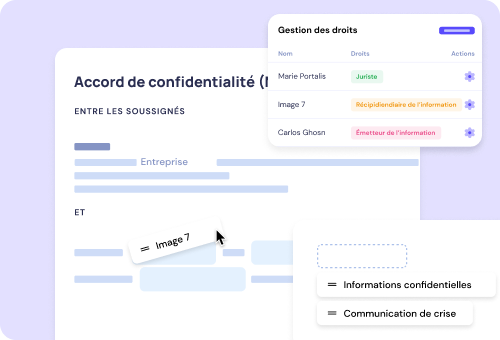What is a confidentiality agreement (NDA)?
A Confidentiality agreement, or non-disclosure agreement (Non Disclosure Agreement - NDA) is a contract by which two entities (legal entities or individuals) undertake to respect the confidentiality of certain information or types of information listed in the contract.
The parties to the contract are named differently depending on the content of their obligation:
✅ Recipient of the information : Party to the contract obliged to keep the information to be provided to it confidential.
✅ Sender of the information : The party to the contract who is the originator of the information that he wishes to keep confidential.
There are two types of confidentiality agreements (NDAs):
✅ The unilateral confidentiality agreement : it commits only one party to confidentiality, the recipient.
✅ The bilateral confidentiality agreement : it commits both parties to the same obligation of confidentiality when they exchange information with each other.
Who are the employees concerned internally?
Confidentiality agreements (NDAs) involve different people in your company, in different ways and especially depending on the use case in which the agreement is used.
👤 Lawyers who have the NOA model : they can either originate the contract or give their in-house clients some autonomy via a Contract Library static (non-automated) or dynamic (automated). Generally speaking, lawyers are necessarily involved in the approval of the agreement, especially when it is an NDA concerning a project or strategic information.
👤 Internal operational staff who need to pass on an NDA: Purchasing, HR, Sales, Marketing teams etc...Anyone needing to ensure the confidentiality of company information in the context of a specific project or operation. They intervene, depending on the company, during the creation of the contract in complete autonomy thanks to a contract generator.
👤 Manager or delegate legally authorised to sign the confidentiality agreement : this is the contact person authorised to sign the contract after validation by the legal and business team.
On solutions such as Seraphin.legalthe manager or employees with delegated authority are automatically notified of the agreement's validation and availability for signature.
👤 Your contractual partner bound by the obligation of confidentiality : Whether it is a client, a service provider or a partner who is a legal or natural person.
| 💡 Good to know: External co-contractors have free and unlimited access to collaborate, negotiate, sign your contracts on Seraphin.legal. |
Disadvantages of the traditional process
❌ Waste of time: Time-consuming, low-value tasks, such as drafting an NDA, do not allow legal teams to focus on strategic transactions such as raising capital, acquiring a competitor or negotiating a strategic contract.
❌ Frustration : Drafting low-complexity confidentiality agreements on a run-around basis is clearly not the most exciting assignment for a lawyer, even more so if the frequency and volume of such agreements is high. In particular, this can lead to frustration on the part of your legal teams.
❌ Loss of autonomy: Operational staff often regret their lack of autonomy and the delay in obtaining certain simple contracts to create, while some legal teams fear the legal risk that this autonomy may cause.
❌ Legal risks: Many legal teams offer self-service contract templates in word/google format. As the entire contract can be modified by its user, the risk of deleting a term, a clause, a mandatory mention can generate a major legal and therefore financial risk for the company.

❌Costly signature: Paper signature is a financial cost but also a time cost. An NDA to be signed as quickly as possible at the other end of France or Europe can take several days to arrive. This practice is also subject to hazards such as strikes, lost or damaged mail. This delays the conclusion of the agreement, the project and therefore the potential receipt of turnover.
❌ Lack of visibility on the contract: Who was involved in this confidentiality agreement? When? Who are the internal and external interlocutors? On what date was the contract validated and by whom? What is the main information to be retained from the confidentiality agreement? This is essential information for the company for employees who were not involved in the contract but who need to collect this information for a third-party project or to take over the contract following a departure.
| 💡 Feedback: During several exchanges with company lawyers and contract managers, some of them told us that contracts and contract sheets are transmitted internally through word, excel files and moving hypertext links. As a result of this practice, information can be lost as people leave or move internally, especially when these files are stored locally. |
❌ Manual reporting: Setting up a dashboard and offering regular reporting on contract activity can be a real nightmare when information is scattered and inputting.
| 💡 Examples: This does not allow the Legal Department to offer reliable and quantified information to report on its contractual activity. It also does not allow the Finance Department, for example, to have real-time visibility on the financial stakes of ongoing negotiations, to have simple access to documents exchanged with co-contractors or to have access to key information to increase the profitability of a legal department. |
❌ Lack of reliable deadline monitoring: Once the contract has been drafted, negotiated, signed, it is now time to execute it. Yet it is complex to reliably track contractual data such as your deadlines if they are stored in an Outlook, Google or even a paper calendar.
Benefits of an automated process
✅ Time saving : As the legal teams have previously carried out work to create and automate contracts, they are no longer required to do the time-consuming work of drafting (collecting information, entering data, etc.). contract library and automation of contracts, they are no longer called upon for the time-consuming aspect of drafting (information gathering, data entry, etc.) but only for their legal expertise (advice, negotiation support, validation, etc.).
✅ Leveraging contract data: Beyond simply eliminating time-consuming tasks, automation also ensures data collection. All the data entered to complete a contract is used to enable you to monitor your deadlines, create your contract sheets or even to manage your contractual activity through a statistical dashboard. This data can be communicated with third-party applications used by your company.
✅ Legal security: No more risk of deleting a term, a clause, a mandatory mention that could generate a major legal and financial risk for the company. Only the fields predetermined by the legal team can be modified and the rest of the contract is fixed.
| 💡 Good to know: Automating contract templates doesn't necessarily require technical expertise. At Seraphin.legal, we've designed a no-code editor thought and designed to allow legal teams to automate their contracts on their own. |
Don't waste any more time signing: Once the service contract has been validated by the relevant parties, it is automatically sent for signature to the parties authorised to sign (whether a manager or a delegate). Once signed, the contract is automatically archived and centralised.
✅ Gain visibility on the contract: Who was involved in this contract? When did it happen? Who are the internal and external interlocutors? On what date was the contract validated and by whom? What is the main information to be retained from this confidentiality agreement? This is essential information for monitoring, taking over or auditing a contract, which you will find directly on the document's activity feed.
For a quick and easy understanding, each contract has a summary sheet automatically generated from the essential clauses of the contract (object, duration, amount, deadline, etc.). It is even possible to manually enrich the contract form by adding specific items to be displayed.
✅ Reliable deadline tracking: Your excel spreadsheet of due dates will be a painful old memory! From now on, due date tracking is simplified by using your contractual data. A notification system and due date calendar allow you to be informed at the right time and to be able to identify certain strategic deadlines.
What is the added value compared to traditional tracking? Find out how Kiloutou saved €400,000 over 2 months thanks to a deadline tracking system 👇
How to automate a confidentiality agreement template?
Creating a skeleton confidentiality agreement
In such an automation process, the legal team obviously retains control over the creation of legal acts.
The aim here is to create the legal skeleton, the legally reliable vehicle that complies with the regulations and the company's strategy. It is therefore a standard version that will adapt to the confidentiality agreements most regularly requested by your internal clients.
Questions to ask before drafting include
| Questions | Indications |
| What are the mandatory terms, clauses or wording of a confidentiality agreement? | This will give you a rough, static first version of your confidentiality agreement. |
| What types of information to protect are included in the most requested confidentiality agreements in your company? | This will allow you to prioritise the construction of your workbook according to priority needs. |
| What variables should be customised on the document? | This will enable you to construct your question form for the contract user. |
What are the most common questions your internal customers ask about confidentiality agreements?
| This will allow you to provide clarity through the drafting of your questions or through help bubbles to guide contract creators. |
Once this standard NDA has been created in Word or Google Doc format, there are two ways to automate it:
- Via direct mail
- Via a no-code editor dedicated to the automation of contracts such as Seraphin.legal

Give ownership to your teams via a self-service offer
Have you ever wondered whether it is necessary to intervene on a confidentiality agreement? You can empower your internal clients to be the creators of their own contracts in complete security so that you can focus on your most complex and high priority assignments.
Thus, your internal customers will be able to personalise their contract from a form that will guide them step by step through the completion of the various fields: date, company name, multiple choice question, unique, contract amount, etc.
The generated contract will be updated in real time in the right-hand panel when you complete the form.

Establish an internal approval system
While it is important to delegate the low-value drafting stage, the approval stage remains crucial.
Indeed, of all the steps in the contract life cycle, the internal validation workflow is essential to ensure the compliance of your company's commitments and counterparties.
For a confidentiality agreement, the Legal Department will necessarily be appropriate to validate this type of draft contract. However, other parties such as the Finance Department or the General Management may want to systematically validate certain agreements according to certain types of criteria: everything depends on the company, its challenges, its strategy or its organisation.

| With a dedicated platform such as Seraphin.legal you can determine the rules applicable to approve a document according to your criteria: type of contract, amount, field of activity, etc. |
Choose to combine contractual performance and legal certainty
No commitment, no credit card.



